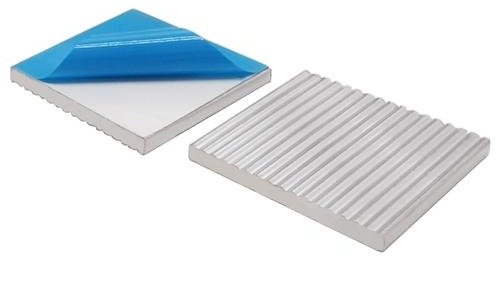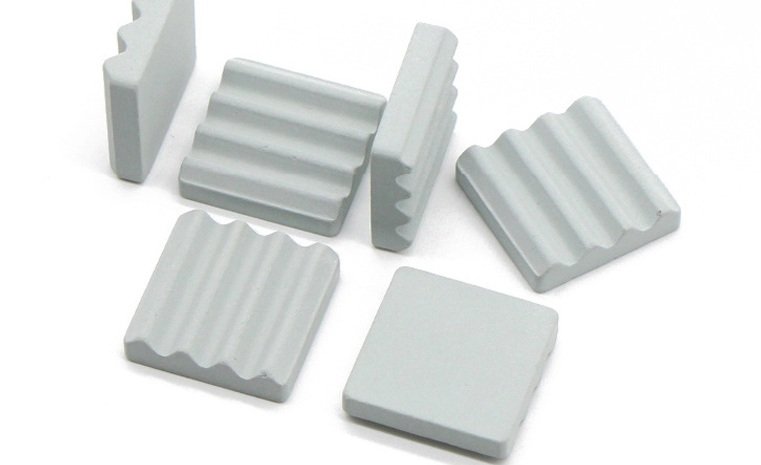Aluminum, a remarkably versatile and abundant metal, plays a pivotal role in countless modern industries, from aerospace and automotive to packaging and electronics. Its unique combination of properties – lightweight nature, excellent strength-to-weight ratio, and high thermal conductivity – makes it indispensable for a vast array of applications. Central to understanding aluminum’s behavior and its suitability for various uses is its melting point. This critical thermal property dictates how the metal is processed, shaped, and ultimately performs in diverse environments.
The Fundamental Melting Point of Pure Aluminum
The melting point represents the temperature at which a solid material transitions into a liquid state. For pure aluminum (Al), this fundamental phase change occurs at a precise temperature:
- Celsius (°C): Approximately 660.3∘C660.3∘C
- Fahrenheit (°F): Approximately 1220.6∘F1220.6∘F
- Kelvin (K): Approximately 933.5 K933.5 K
This specific temperature is a benchmark, but it’s crucial to understand that in real-world industrial applications, aluminum is rarely used in its purest form. Instead, it is often alloyed with other elements to enhance specific properties, which in turn can significantly alter its melting behavior.
Factors Influencing Aluminum’s Melting Point
While the melting point of pure aluminum is a fixed value, several factors can influence the temperature range at which aluminum alloys melt. These variations are critical considerations in manufacturing, material selection, and application design.
Alloying Elements
The most significant factor affecting aluminum’s melting point is the addition of other metals to form alloys. Alloying introduces different atomic structures and bonding energies, which can either raise or lower the melting temperature compared to pure aluminum.
- Impact on Melting Range: Unlike pure metals, which typically melt at a single, precise temperature, alloys often have a melting range, meaning they begin to soften at one temperature (solidus) and become fully liquid at a higher temperature (liquidus).
- Common Alloy Examples:
- Copper-Aluminum Alloys: Alloys containing copper, such as those in the 2xxx series (e.g., 2024), are known for their high strength. Their melting points can range significantly lower than pure aluminum, typically between 500∘C500∘C and 600∘C600∘C (932∘F932∘F to 1112∘F1112∘F). The presence of copper disrupts aluminum’s crystal lattice, forming intermetallic compounds that can have lower melting points.
- Magnesium-Aluminum Alloys: Alloys containing magnesium, like those in the 5xxx series (e.g., 5052), are valued for their excellent corrosion resistance and weldability. Their melting points generally remain closer to that of pure aluminum, often between 600∘C600∘C and 700∘C700∘C (1112∘F1112∘F to 1292∘F1292∘F). Magnesium integrates well into the aluminum lattice, causing less drastic changes to the melting temperature.
- Purpose of Alloying: Engineers strategically select alloying elements to tailor properties like strength, hardness, corrosion resistance, and castability, often accepting a modified melting point as a consequence.
Purity of the Aluminum
The presence of impurities, even in trace amounts, can significantly impact the melting characteristics of aluminum. Higher-purity aluminum tends to have a more consistent and higher melting point. Impurities act as defects in the crystal lattice, lowering the energy required for the atomic bonds to break, thus reducing the melting point and potentially broadening the melting range. This effect is particularly relevant in high-precision applications where consistent material behavior is paramount.
Temperature and Pressure Conditions
While the standard melting point is typically measured at atmospheric pressure, variations in ambient conditions can exert a minor influence.
- High Pressure: Under extremely high pressures, the melting point of aluminum can slightly increase. The increased pressure makes it more difficult for the atoms to break free from their solid structure and transition into a liquid state.
- Low Pressure or Vacuum: Conversely, in a low-pressure environment or a vacuum, the melting point might slightly decrease. These variations are generally minor for most industrial processes but can become significant in specialized applications, such as vacuum casting or space-related manufacturing.
Grain Size and Structure
The microstructure of aluminum, particularly its grain size, can also subtly affect its melting point.
- Smaller Grain Sizes: Materials with smaller grain sizes have a larger total grain boundary area. Grain boundaries are regions of atomic disorder, and atoms at these boundaries are less tightly bound than those within the crystal lattice. This increased disorder can slightly reduce the energy required for melting, leading to a marginal decrease in the melting point.
- Larger Grain Sizes: Conversely, larger grain sizes imply less grain boundary area and a more ordered crystalline structure, which can slightly increase the melting point.
Stress and Strain
The mechanical history of an aluminum part, specifically the presence of internal stress and strain, can influence its melting behavior.
- Defects and Dislocations: Processes like cold working can introduce defects and dislocations into the crystal lattice. These imperfections can lower the local energy required for melting, potentially altering the melting point. While the macroscopic effect on the overall melting point might be small, it can influence localized melting behavior during processing like welding.
Why Aluminum’s Melting Point is Crucial for Industry
Understanding the melting point of aluminum and its alloys is not merely an academic exercise; it is fundamental to numerous industrial processes and the successful application of aluminum in diverse products.
Manufacturing and Processing
The melting point directly dictates how aluminum is processed and shaped.
- Casting: Knowing the precise melting range is essential for designing casting processes, including die casting, sand casting, and investment casting. Manufacturers need to ensure the metal is heated to a temperature where it flows readily into molds without overheating, which could degrade properties or cause excessive energy consumption.
- Welding: In welding, the melting point determines the heat input required to fuse aluminum parts. Different alloys require specific welding parameters to achieve strong, defect-free joints.
- Extrusion: While extrusion doesn’t involve full melting, the aluminum billets are heated to just below their solidus temperature to make them pliable enough to be pushed through a die, forming complex shapes. The melting point provides the upper limit for this heating.
Efficient Recycling
Aluminum is one of the most recyclable materials on the planet, and its melting point is key to this sustainability. Recycling aluminum requires significantly less energy (up to 95% less) than producing primary aluminum from ore. Knowing the exact melting point allows recycling facilities to efficiently melt down scrap aluminum, separate it from impurities, and reform it into new products with minimal energy waste.
Application in High-Temperature Environments
For applications where aluminum components are exposed to elevated temperatures, the melting point serves as a critical design limit. Engineers must ensure that the operational temperature of a component remains well below its melting point to prevent structural failure, deformation, or loss of mechanical properties. This is particularly vital in aerospace engines, automotive components, and, notably, in thermal management solutions.
Aluminum and Heat Sinks: A Perfect Partnership
As a leading manufacturer of heat sinks, we understand the profound importance of aluminum’s thermal properties. Aluminum is the material of choice for the vast majority of heat sink applications, and its melting point, while not directly reached during operation, is a crucial underlying factor in its effectiveness and reliability.
Why Aluminum for Heat Sinks?
Aluminum’s popularity in thermal management stems from a combination of its advantageous characteristics:
- High Thermal Conductivity: Aluminum efficiently transfers heat away from electronic components, preventing overheating and ensuring optimal performance and longevity.
- Lightweight: Its low density makes aluminum heat sinks suitable for applications where weight is a critical concern, such as in portable electronics and aerospace.
- Cost-Effectiveness: Compared to other high thermal conductivity materials like copper, aluminum offers a more economical solution, making it accessible for a wider range of products.
- Formability: Aluminum can be easily extruded, machined, and stamped into complex fin geometries, maximizing surface area for heat dissipation.
The Melting Point as a Safety Threshold
While a heat sink’s primary function is to dissipate heat, not to melt, its melting point serves as a fundamental safety and performance threshold. Electronic components can generate significant heat, and the heat sink must maintain its structural integrity and thermal contact with the component under continuous operation.
- Ensuring Structural Integrity: The melting point of the chosen aluminum alloy guarantees that the heat sink will not deform or fail structurally even when subjected to the maximum anticipated operating temperatures. Heat sinks are designed to operate far below their melting point, typically within a safe temperature range that ensures stable performance and prevents damage to the sensitive electronics they protect.
- Thermal Stability: For example, a CPU heat sink might experience temperatures up to 80∘C80∘C to 100∘C100∘C (176∘F176∘F to 212∘F212∘F) under heavy load. The aluminum’s high melting point ensures that even at these elevated operating temperatures, the heat sink remains solid, rigid, and continues to effectively conduct and dissipate heat without any risk of phase change or degradation of its thermal interface.
- Alloy Selection for Heat Sinks: Specific aluminum alloys, such as 6063 and 6061, are commonly used for heat sinks due to their excellent thermal conductivity, extrudability, and mechanical properties. While their melting points are slightly lower than pure aluminum due to alloying, they are still well above any realistic operating temperature a heat sink would encounter. This ensures that the material remains robust and reliable throughout its service life.
In essence, aluminum’s high melting point provides the necessary thermal headroom, acting as a critical safeguard that allows heat sinks to perform their vital role in cooling electronics efficiently and reliably without ever approaching a state of material instability.
Conclusion
The melting point of aluminum, approximately 660.3∘C660.3∘C (1220.6∘F1220.6∘F), is a fundamental property that underpins its widespread utility. While this precise figure applies to pure aluminum, the melting characteristics of its alloys are influenced by various factors, including alloying elements, purity, pressure, grain size, and stress. Understanding these nuances is crucial for optimizing manufacturing processes, facilitating efficient recycling, and ensuring the safe and reliable performance of aluminum components in high-temperature applications. For industries like ours, specializing in thermal management, aluminum’s melting point is a testament to its inherent stability, ensuring that our heat sinks provide robust and effective cooling solutions, maintaining their structural integrity and thermal performance even under the most demanding conditions.
Need Custom Aluminum Heat Sinks?
At IGSINK, we specialize in designing and manufacturing high-performance custom aluminum heat sinks tailored to your exact specifications. Leveraging the optimal thermal properties of aluminum and our advanced manufacturing capabilities, we deliver solutions that ensure efficient heat dissipation and enhance the longevity of your electronic components.






